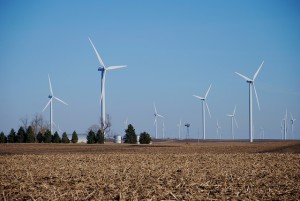(Bloomberg)—American farmers who expanded production using rented land during the commodity boom a few years ago are now struggling to repay loans.
A crop glut has eroded prices and sent profit to a 14-year low, but rents have barely budged and debt levels are the highest in more than three decades, government data show. Bankers are cutting back on loans that aren’t secured by land, so more farmers are tapping into a U.S. Department of Agriculture program designed to be the lender of last resort. And it’s almost out of money.
The USDA’s Farm Service Agency has allocated $140 million a month on average for direct operating loans since Oct. 1, leaving just $129 million in the budget for the remaining four months of the fiscal year. With about 39 percent of U.S. farms operating on rented property, increased government intervention signals lower land values and more consolidation because debt-strapped and younger farmers will be forced to quit, according to farm groups advocating for more financial aid.
Read entire article in Bloomberg news and republished in National Real Estate Investor
To discuss financing needs contact Liberty Realty Capital.





